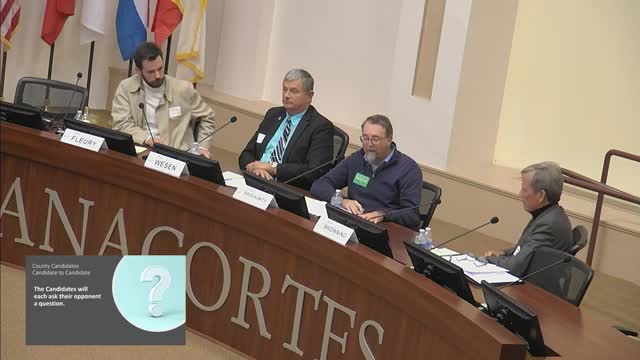County leaders tackle urgent workforce housing crisis
October 16, 2024 | Anacortes, Skagit County, Washington
This article was created by AI summarizing key points discussed. AI makes mistakes, so for full details and context, please refer to the video of the full meeting. Please report any errors so we can fix them. Report an error »

In a recent county council meeting, officials addressed the pressing issue of workforce housing, highlighting its significance not only for economic development but also for families and working-class individuals. The discussion underscored the increasing problem of street homelessness, particularly along the I-5 corridor, and the need for affordable housing options that allow families to downsize and remain in the community.
Council members emphasized their collaborative efforts with city mayors and other stakeholders to enhance workforce housing availability. They noted that current regulations limit the county's ability to mandate housing development, allowing only 20% of new housing to be designated for workforce needs. To counter this, the council is exploring financial incentives to encourage cities to improve their housing stock and create community-oriented developments.
One innovative proposal discussed involved the construction of condominiums designed for young buyers, which would not appreciate at the same rate as traditional housing, making them more accessible. The council members expressed optimism about ongoing projects in areas like Seadrill Woolly, where community-focused housing initiatives are already taking shape.
The meeting also featured a pointed exchange regarding fish recovery funding, with one council member questioning the allocation of $150 million for salmon recovery efforts. Concerns were raised about the lack of statistical evaluation and data management in these initiatives, prompting a call for more transparency and accountability in environmental funding.
Overall, the meeting highlighted the urgent need for strategic housing solutions and effective resource management to address both community needs and environmental challenges.
Council members emphasized their collaborative efforts with city mayors and other stakeholders to enhance workforce housing availability. They noted that current regulations limit the county's ability to mandate housing development, allowing only 20% of new housing to be designated for workforce needs. To counter this, the council is exploring financial incentives to encourage cities to improve their housing stock and create community-oriented developments.
One innovative proposal discussed involved the construction of condominiums designed for young buyers, which would not appreciate at the same rate as traditional housing, making them more accessible. The council members expressed optimism about ongoing projects in areas like Seadrill Woolly, where community-focused housing initiatives are already taking shape.
The meeting also featured a pointed exchange regarding fish recovery funding, with one council member questioning the allocation of $150 million for salmon recovery efforts. Concerns were raised about the lack of statistical evaluation and data management in these initiatives, prompting a call for more transparency and accountability in environmental funding.
Overall, the meeting highlighted the urgent need for strategic housing solutions and effective resource management to address both community needs and environmental challenges.
View full meeting
This article is based on a recent meeting—watch the full video and explore the complete transcript for deeper insights into the discussion.
View full meeting
